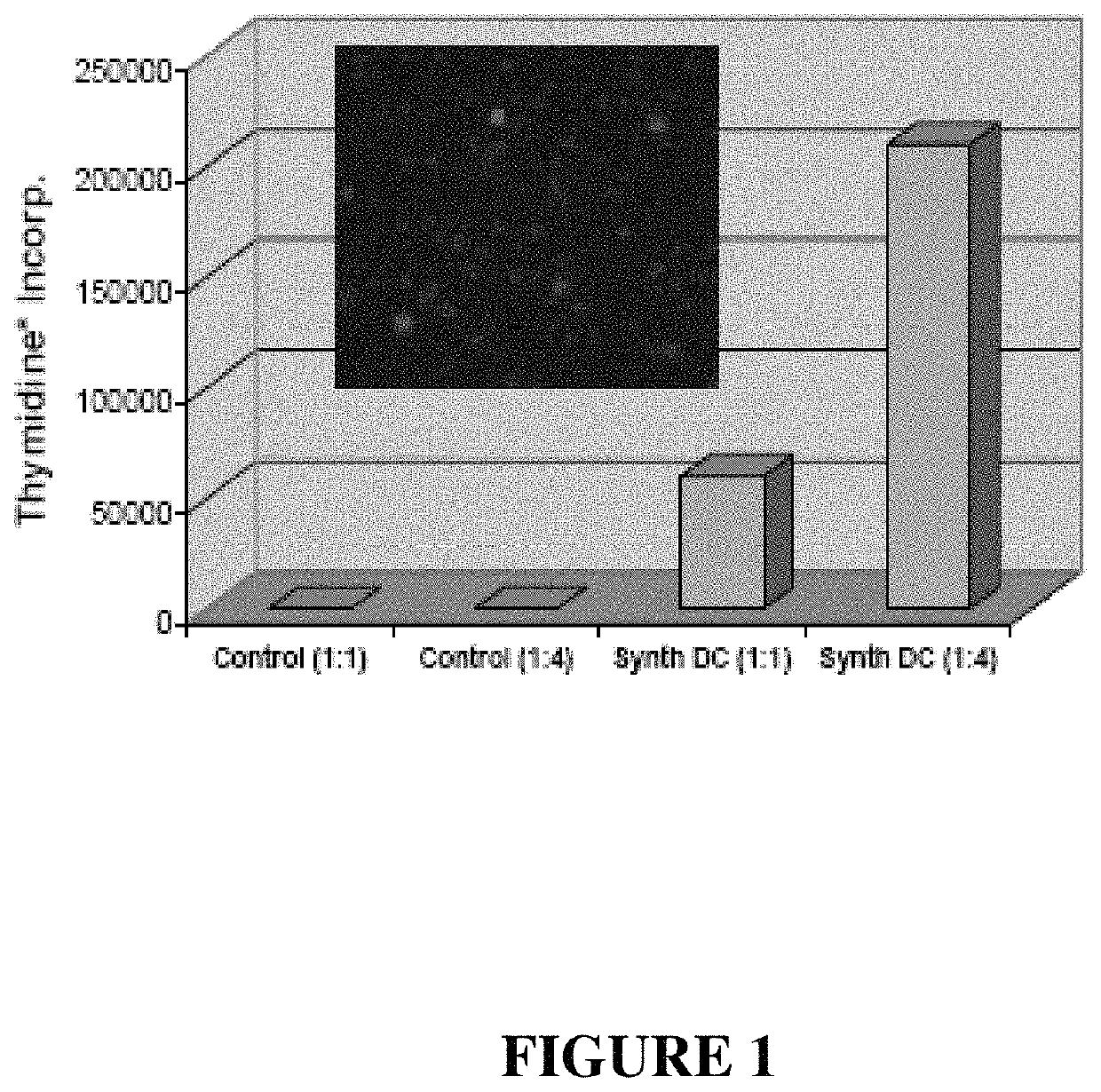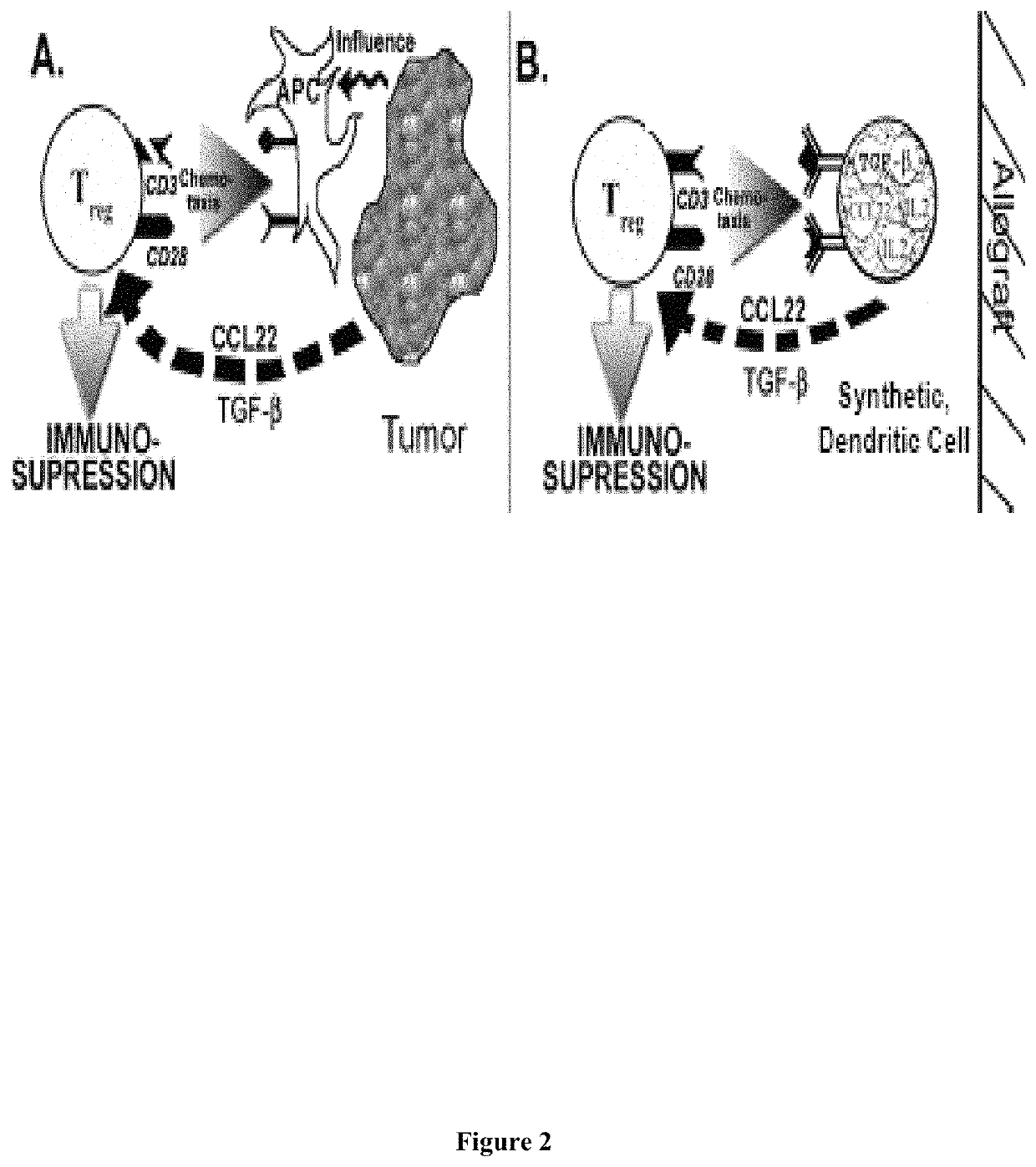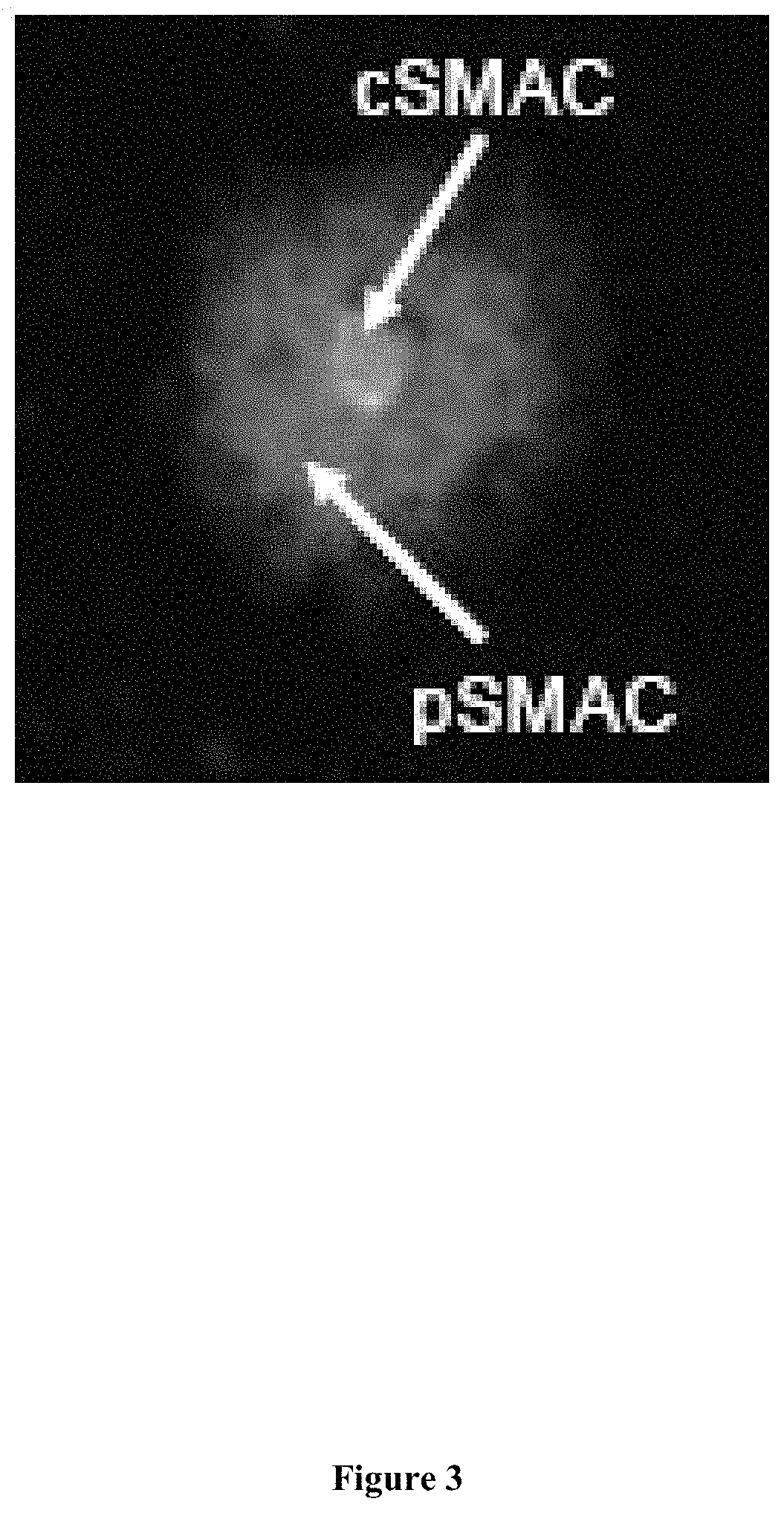Vasoactive intestinal peptide release from microparticles
a technology of intestinal peptides and microparticles, which is applied in the direction of peptide/protein ingredients, microcapsules, capsule delivery, etc., can solve the problems of imbalance of immune system, tooth loss, and affect over 78 million americans
- Summary
- Abstract
- Description
- Claims
- Application Information
AI Technical Summary
Benefits of technology
Problems solved by technology
Method used
Image
Examples
example i
Emulsification of Regulatory T-Cell Modulating Agents
[0392]Preparing emulsions of water soluble factors using biodegradable polymers is a commonly used strategy to deliver materials over extended periods of time and can make administration of factors with short half lives in vivo a reality. The use of the double-emulsion / solvent-evaporation technique is a commonly used strategy. Odonnell et al., Advanced Drug Delivery Reviews 28: 25-42 (1997), See, FIG. 5. A frequently used polymer in these formulations is poly-lactic-co-glycolic acid (PLGA), which is both biocompatible and FDA approved. PLGA is also attractive because its degradation rates can be controlled by the ratio of its monomers (lactide which is more hydrophobic, and glycolide which is more hydrophilic). This control over degradation behavior provides the ability to release factors over periods from days to months. Hanes et al., Pharm Biotechnol 6:389-412 (1995). Microparticles prepared in this manner can carry large payloa...
example ii
Labeling Artificial Presenting Cell Surface Polymer Functionalization
[0394]This example provides a simple, rapid detection method to detect particle surface polymer modifications capable of attaching to soluble and membrane Treg stimulation factors.
[0395]Particle surface labeling of biodegradable polymers has been accomplished using several established techniques. The most common strategy for PLGA is to utilize carboxylic acid groups, which are present at the end groups and are generated upon degradation of the ester bonds in its backbone. This can be accomplished using carbodiimide chemistry and can be facilitated using NHS esters. See, FIG. 6.
[0396]Another approach has been to create more of these carboxylic acid groups on the surface using a surfactant which is rich in these chemical groups during fabrication of the particle. Keegan et al., Macromolecules 37:9779-9784 (2004). Also, short treatments with 0.1M NaOH can generate an abundance of these groups on the particle surface.
[...
example iii
Emulsification of Soluble Treg Cell Factors in PLGA Microparticles
[0402]This example describes the emulsification (i.e., for example, encapsulation) of soluble factors within PLGA microparticles using a modified double emulsion procedure. Odonnell et al., Advanced Drug Delivery Reviews 28:25-42 (1997).
[0403]Briefly, 20 μg of protein factor and 20 mg of bovine serum albumen will be dissolved in 200 μL of sterile PBS and added to a solution of 100 mg of 10, 18-30, or 40-78 kDa PLGA with a lactide:glycolide monomer ratio of 50:50 in 2 ml of dichloromethane. This two phase system will be sonicated for 10 seconds using a probe sonicator to form the primary emulsion. The emulsion will immediately be transferred to 50 mL of a homogenizing (5000 rpm), aqueous solution containing 5% by weight poly(vinyl) alcohol (PVA) which serves as a surfactant. After 30 seconds of homogenization, the double emulsion is transferred to a stirring solution of 1% PVA (100 mL) to allow for evaporation of the d...
PUM
| Property | Measurement | Unit |
|---|---|---|
| molecular weight | aaaaa | aaaaa |
| molecular weight | aaaaa | aaaaa |
| molecular weight | aaaaa | aaaaa |
Abstract
Description
Claims
Application Information
 Login to View More
Login to View More - R&D
- Intellectual Property
- Life Sciences
- Materials
- Tech Scout
- Unparalleled Data Quality
- Higher Quality Content
- 60% Fewer Hallucinations
Browse by: Latest US Patents, China's latest patents, Technical Efficacy Thesaurus, Application Domain, Technology Topic, Popular Technical Reports.
© 2025 PatSnap. All rights reserved.Legal|Privacy policy|Modern Slavery Act Transparency Statement|Sitemap|About US| Contact US: help@patsnap.com



